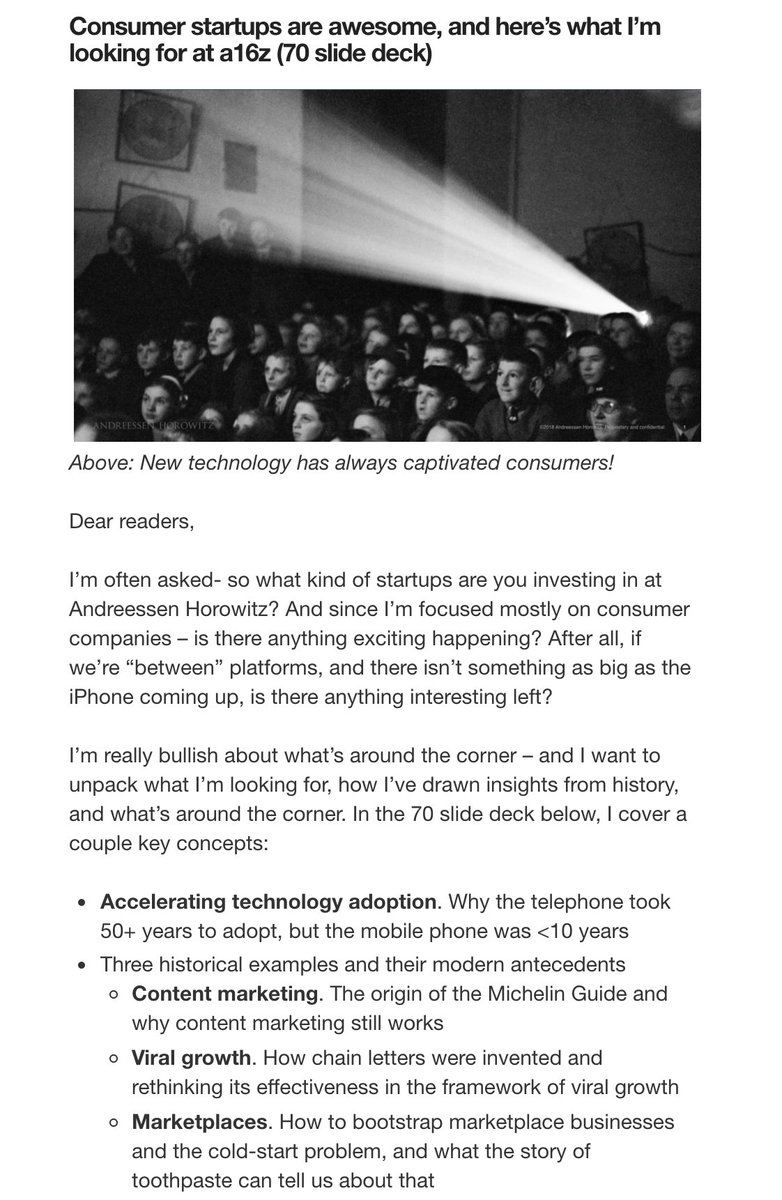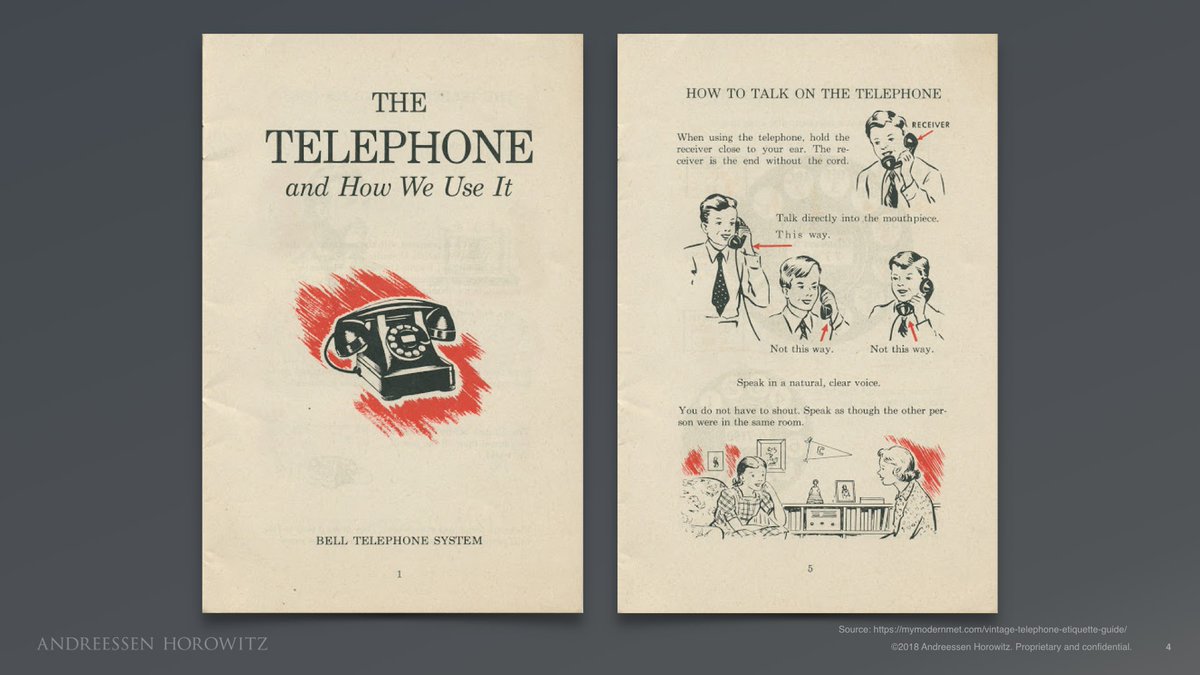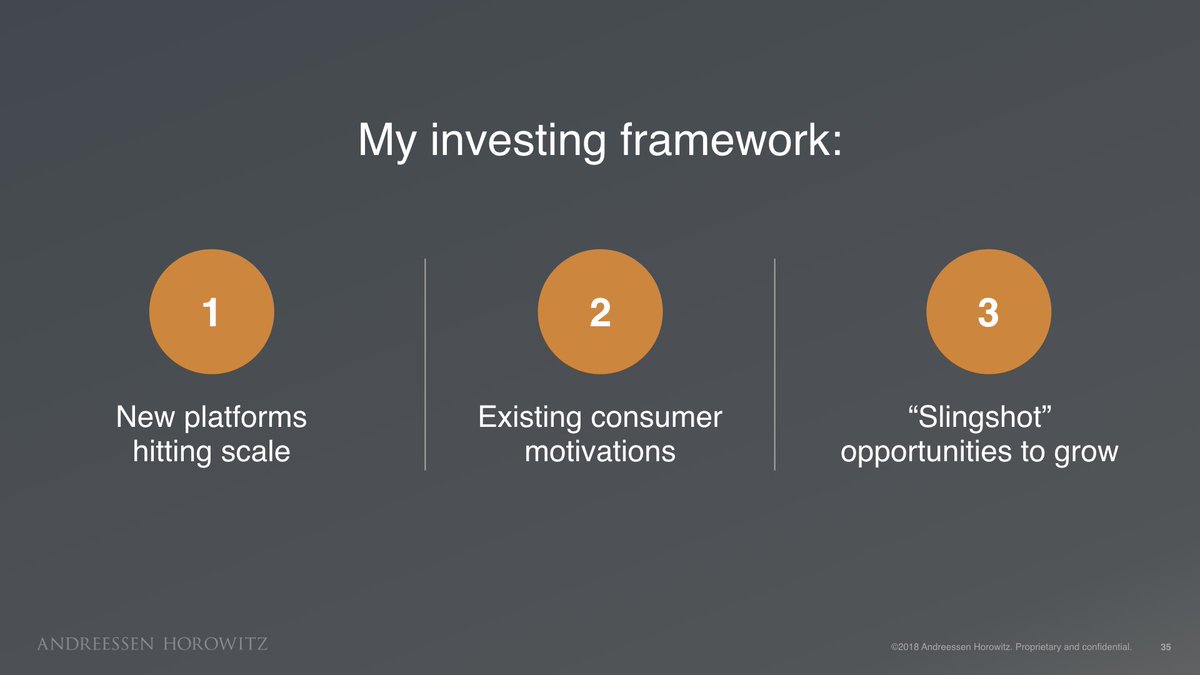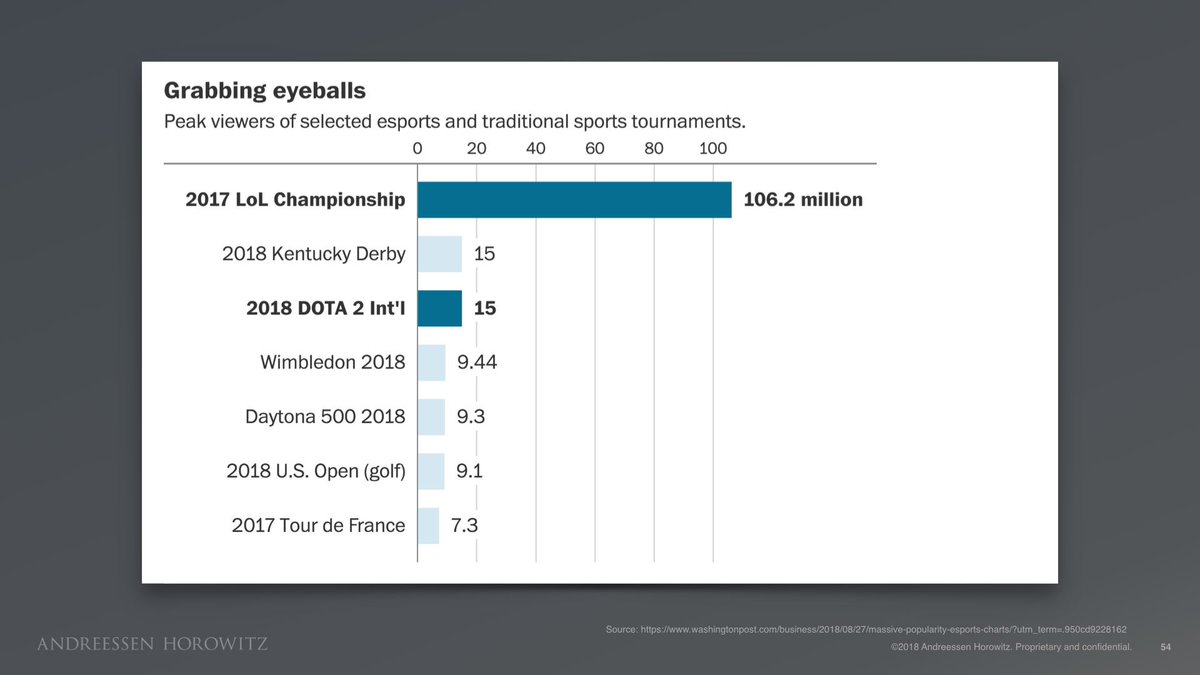
👇 Thread. New deck getting published this week: "Consumer startups are awesome, and here's what I'm looking to invest in at Andreessen Horowitz." If you want to read it, subscribe to my newsletter here: https://t.co/262t8eh0wf









\U0001f447Thread.
— Andrew Chen (@andrewchen) November 1, 2018
Published a new essay: The red flags and magic numbers that investors look for in your startup\u2019s metrics \u2013 80 slide deck included! pic.twitter.com/w6HRD4o22f
From a metrics standpoint, it's important to analyze the acquisition mix, the quality of the signups, and the platform dependencies. In the deck, I talk through a bunch of the red flags I'm looking for. pic.twitter.com/5eXkLB0aYQ
— Andrew Chen (@andrewchen) November 1, 2018
More from Startups
I shipped all these apps in 2020. Most of them generated $0.
🎬 https://t.co/JAhXqsuu6h $0
🌍 https://t.co/BrNUAhfiIT $0
💡 https://t.co/ZWcLfOH4aI $0
🐞 https://t.co/aghOxYEcPI $1.99
👍 https://t.co/2JhJLe27pW $3,025 in 10 days.
But that's ok, just keep shipping! My stories👇
🎬 https://t.co/wuiBp1XsYD is the first thing I created. It's a community for indie makers. The different thing is we post updates in videos. I created it for fun as I think the world doesn't need one more text-based forum, so I make a video one. No monetization plan so far.
🌍 https://t.co/fiwjgCWho5 is a social app. The idea is from Linktree, an app to share your social links. I thought it would be cool to add more visuals to it, and meanwhile we can explore others around. I also have no monetization plan for it. Make it for fun too.
💡 https://t.co/fZfL45uvVX is a platform to connect influencers with their fans. People says it's like @superpeer. But the only difference is it's all sync. Influencers don't need to commit their time to fixed slot. Fans pay to ask questions, influencers can answer at anytime.
Continuing Influenswer... I think the product has its potential. But for now maybe I didn't find the right niche to serve. Will re-evaluate it in future.
🎬 https://t.co/JAhXqsuu6h $0
🌍 https://t.co/BrNUAhfiIT $0
💡 https://t.co/ZWcLfOH4aI $0
🐞 https://t.co/aghOxYEcPI $1.99
👍 https://t.co/2JhJLe27pW $3,025 in 10 days.
But that's ok, just keep shipping! My stories👇
🎬 https://t.co/wuiBp1XsYD is the first thing I created. It's a community for indie makers. The different thing is we post updates in videos. I created it for fun as I think the world doesn't need one more text-based forum, so I make a video one. No monetization plan so far.
🌍 https://t.co/fiwjgCWho5 is a social app. The idea is from Linktree, an app to share your social links. I thought it would be cool to add more visuals to it, and meanwhile we can explore others around. I also have no monetization plan for it. Make it for fun too.
💡 https://t.co/fZfL45uvVX is a platform to connect influencers with their fans. People says it's like @superpeer. But the only difference is it's all sync. Influencers don't need to commit their time to fixed slot. Fans pay to ask questions, influencers can answer at anytime.
Continuing Influenswer... I think the product has its potential. But for now maybe I didn't find the right niche to serve. Will re-evaluate it in future.






















